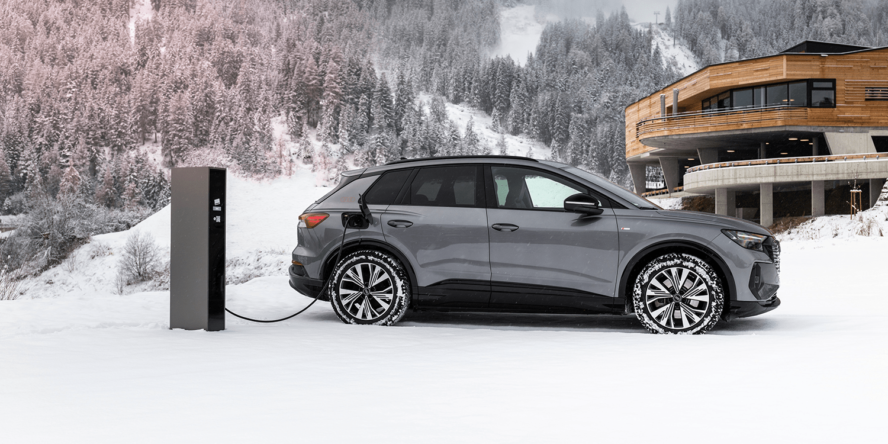Cutting-Edge Technology Eliminates EV Battery Range Degradation In Cold Weather
Just as the cold diminishes a camera’s battery life quicker than usual, electric vehicle (EV) batteries have struggled in icy conditions.

[Aug 21, 2023: Staff Writer, The Brighter Side of News]
Batteries, with their susceptibility to temperature fluctuations and wear from the grind of regular use, seemed almost counterintuitive in cars. (CREDIT: Creative Commons)
In recent years, the intricacies of electric car batteries have ignited a fervor in the world of automotive research. Batteries, with their susceptibility to temperature fluctuations and wear from the grind of regular use, seemed almost counterintuitive in cars.
“A car is one of the worst places one can put a battery,” notes a leading industry expert. He adds, “batteries don’t handle getting emptied very well,” highlighting challenges such as enduring the summer's harsh heat and winter's biting cold. Indeed, just as the cold diminishes a camera’s battery life quicker than usual, electric vehicle (EV) batteries have traditionally struggled in icy conditions.
However, a recent breakthrough might turn the tables in favor of battery technology.
For the uninitiated, the crux of a battery's operation lies in its composition. At its core, a battery consists of two electrodes, separated by an electrolyte. The latter is responsible for storing the electrical charge and can be in various forms, such as liquid, paste, or even solid in the case of solid-state batteries.
Related Stories:
The generation of electricity hinges on a dual chemical reaction. While the electrode at one end reacts with the electrolyte to release electrons, the other end absorbs these free electrons for its own reaction with the electrolyte.
This electron flow isn't direct within the battery. Instead, it is channeled through external wires connected to the electrodes, powering devices from motors to lights. The moment these connections are severed, the battery ceases to produce electricity.
The Rise of the Cold-Resistant LiDFOB Battery
Emerging from the hallowed halls of the U.S. Department of Energy's research labs is a novel additive that promises to revolutionize battery technology: lithium difluoro(oxalato)borate, more commonly referred to as “LiDFOB.”
Just as the cold diminishes a camera’s battery life quicker than usual, electric vehicle (EV) batteries have traditionally struggled in icy conditions. (CREDIT: Creative Commons)
The sheer prowess of LiDFOB lies in its ability to perform under frigid conditions. It promises a consistent energy output, even at temperatures as chilling as -20°C (-4°F). Moreover, in laboratory conditions, these batteries showcased impressive durability, maintaining their capacity even after 400 charge-discharge cycles. "One might point out that an EV battery will be drained and recharged well over 400 times during its life, and that is one reason why LiDFOB batteries are still in the testing and development stages," a scientist points out.
Moreover, LiDFOB batteries seem to be a safer alternative. Traditional lithium-ion batteries, if ignited, can fuel their own fires due to their internal chemistry. However, this isn't the case with LiDFOB batteries, which, if caught in a blaze, are much easier to manage, reducing the risk to both victims and first responders.
The sheer prowess of LiDFOB lies in its ability to perform under frigid conditions. It promises a consistent energy output, even at temperatures as chilling as -20°C (-4°F). (CREDIT: Creative Commons)
Challenges Before Mass Production
However, before these batteries can be integrated into every EV and gadget, there are considerable hurdles to overcome.
Firstly, the path from laboratory testing to real-world application is often strewn with unexpected challenges. The mechanisms for mass-producing these batteries efficiently and cost-effectively are still under development. Currently, the price point for LiDFOB stands at a whopping $239.50 per gram, making large-scale production an economic challenge.
Additionally, the environmental implications of introducing fluorine – a component of LiDFOB – into batteries have yet to be fully understood. Past mishandlings of fluorine compounds significantly damaged the ozone layer. Though pure fluorine is benign to the atmosphere, its compounds are not. This necessitates stringent containment measures during recycling processes.
The Battery Landscape: A Paradigm Shift on the Horizon
The surge in battery research and innovation is undeniable. While the 1980s saw skepticism surrounding the widespread use of batteries, today's technological landscape cannot be imagined without them. From the need for sustainable rare-earth materials to ensuring safety against fires, the challenges are multifaceted. Especially in the realm of EVs, with large batteries exposed to various risks from environmental conditions to careless driving.
Many users, absorbed in the functionality of their EVs, might overlook the intricacies of battery maintenance. Hence, modern batteries must be resilient, designed to endure years of potential neglect.
As the world progresses towards a more sustainable future, battery technologies like LiDFOB emerge as front-runners in driving this change. Whether or not LiDFOB becomes the standard, one thing is certain: the EV batteries of today will soon be relics of the past, making way for more advanced, efficient, and sustainable solutions.
For more science news stories check out our New Innovations section at The Brighter Side of News.
Note: Materials provided above by The Brighter Side of News. Content may be edited for style and length.
Like these kind of feel good stories? Get the Brighter Side of News' newsletter.
Joseph Shavit
Head Science News Writer | Communicating Innovation & Discovery
Based in Los Angeles, Joseph Shavit is an accomplished science journalist, head science news writer and co-founder at The Brighter Side of News, where he translates cutting-edge discoveries into compelling stories for a broad audience. With a strong background spanning science, business, product management, media leadership, and entrepreneurship, Joseph brings a unique perspective to science communication. His expertise allows him to uncover the intersection of technological advancements and market potential, shedding light on how groundbreaking research evolves into transformative products and industries.



